Faithful mates, hot tempers form primal life for gannets
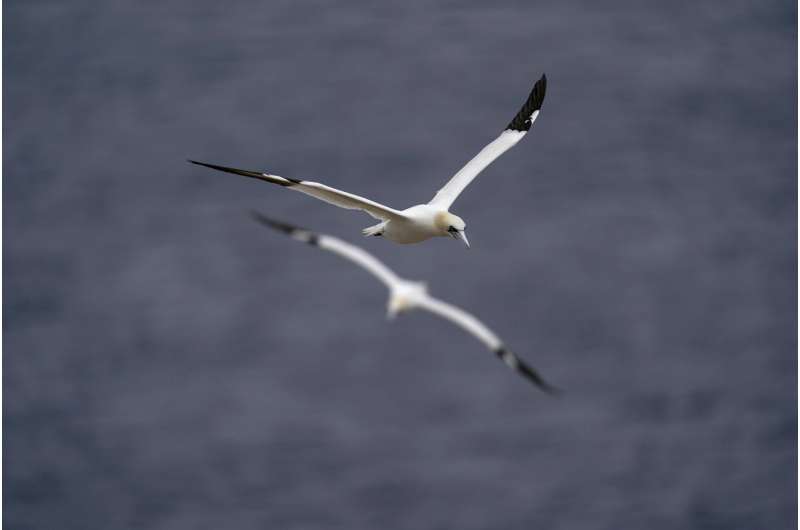
Northern gannets share two maxims familiar to humans: "home sweet home" and "don't tread on me."
They pack together on a Bonaventure Island plateau like New York commuters jamming a subway, only they're louder. They are devoted parents and could teach humans a thing or two about loyalty in marriage.
Year after year, gannet pairs come separately from distant, scattered Atlantic waters to reunite, mate again and raise new chicks on the precise nesting spots they called home before heading south for the winter.
The island just off Quebec's Gaspe Peninsula offers remarkable insights into the northern gannets because they are easily accessible in vast numbers, seem to ignore humans and unlike many seabird species put up with being studied and tagged.
Their struggles to feed and breed in a warming climate are being closely watched by scientists.
Some of the lessons learned here and from other colonies about the life of the gannets:
MATES FOR LIFE: The gannets appear to be better than humans at monogamy, despite spending half the year apart, or perhaps because of that.
Marine biologist David Pelletier, an expert on their nest behavior who teaches at Cegep de Rimouski, found that 69% remain "faithful;" meaning they breed with the same mate for life; 22% are "divorced," meaning they find new mates; 9% are widowed.
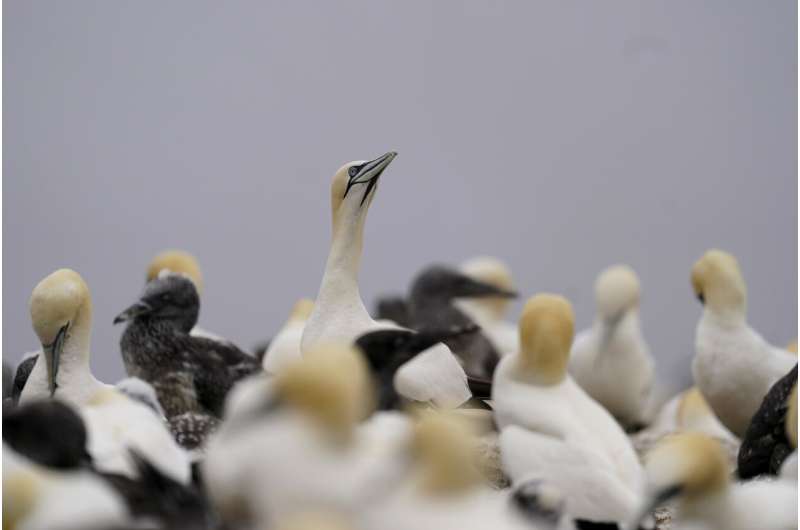
By contrast, about one third of Americans who have ever been married have gone through divorce.
YES, BUT: It's all about home base, not romance, say the scientists—though does anyone really know what's in a gannet's heart?
"Gannets are above all faithful to their territory, which explains why they are still quite faithful to their partner," Pelletier said.
That primal need to reunite on the same exact patch of ground comes with a striking hostility to intruders from the neighborhood. The birds do not want the next gannet over to get in their territory, even as they reside barely a wingspan apart. That's when things get ugly. They nip, screech and may fight to exhaustion, sometimes death.
___
PARENTHOOD: The mates take turns going to sea for fish and feeding the young. They're so intent on nourishing their chicks that the fledglings grow larger and chubbier than their parents by the time of the winter migration south. They'll burn off that fat at sea as they learn over time how to dive and fly like the grownups.
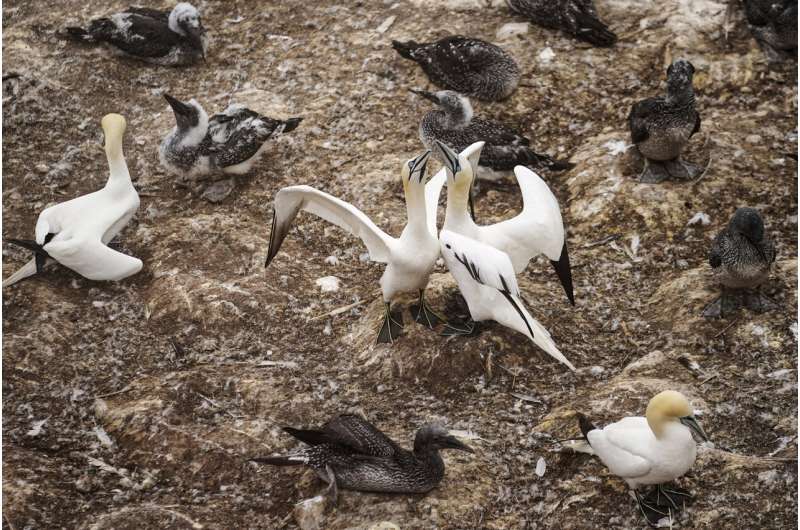
YES, BUT: A chick that wanders from the nest is in great peril, both from other adult gannets that may attack it as an interloper and from its own parents, which may not recognize it as theirs when it returns.
"At a few weeks old, if it is attacked by adult gannets, it's fatal—whether it's its parents or not," Pelletier said. "As it grows older, the chick develops a strong neck which allows it to withstand attacks by other gannets."
___
GANNET-SPEAK: The birds make a racket with their raucous calling and clacking, but their communication is a full body affair.
A gannet alone on the nest will often shake its head from side to side, then dip its head under each wing as if checking for body odor. Translation: stay away or else.
A hungry gannet tells its mate that it is leaving the nest to fish by pointing its beak straight up at the sky.
-
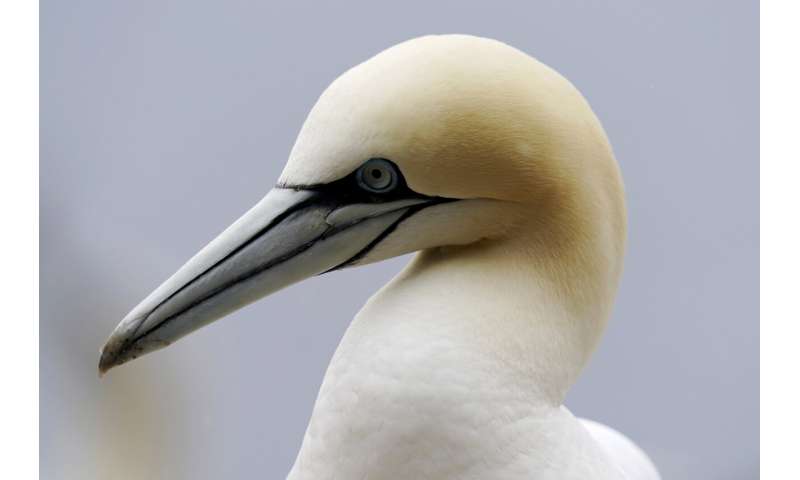
A northern gannet is visible on Bonaventure Island in the Gulf of St. Lawrence off the coast of Quebec, Canada's Gaspe Peninsula, Tuesday, Sept. 13, 2022. Bonaventure Island offers remarkable insights into northern gannets, thanks to an enormous and easily accessible colony of these majestic seabirds. Credit: AP Photo/Carolyn Kaster -
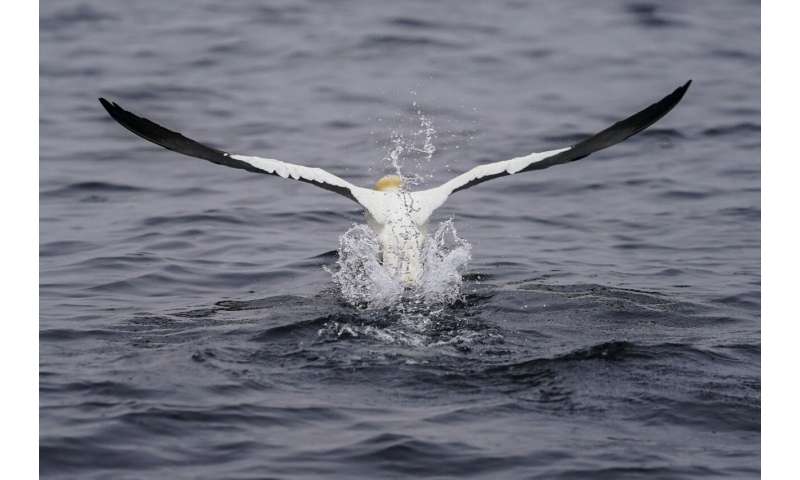
A northern gannet pushes off as it takes flight from the Gulf of St. Lawrence near Bonaventure Island off the coast of Quebec, Canada's Gaspe Peninsula, Tuesday, Sept. 13, 2022. Northern gannets are considered sentinels of the marine ecosystem. Their struggles to feed and breed in a warming climate are being closely watched by scientists. Credit: AP Photo/Carolyn Kaster -
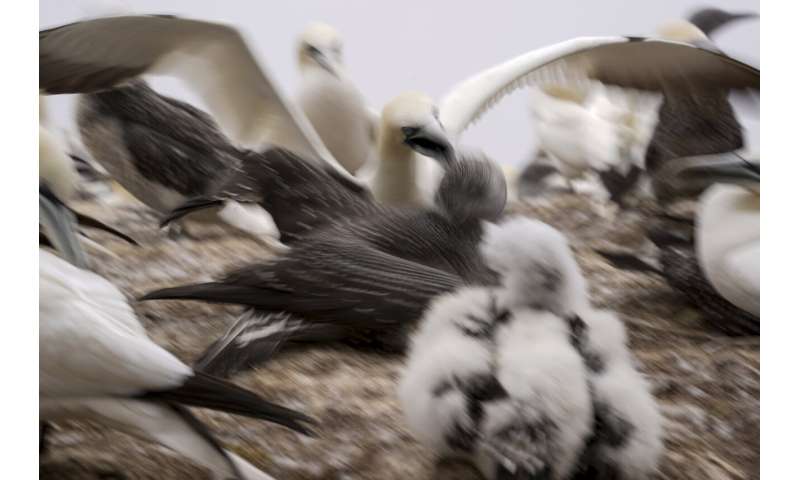
A white adult northern gannet pecks at a gray juvenile among the colony on Bonaventure Island in the Gulf of St. Lawrence off the coast of Quebec, Canada's Gaspe Peninsula, Monday, Sept. 12, 2022. Northern gannets are considered sentinels of the marine ecosystem. Their struggles to feed and breed in a warming climate are being closely watched by scientists. Credit: AP Photo/Carolyn Kaster -
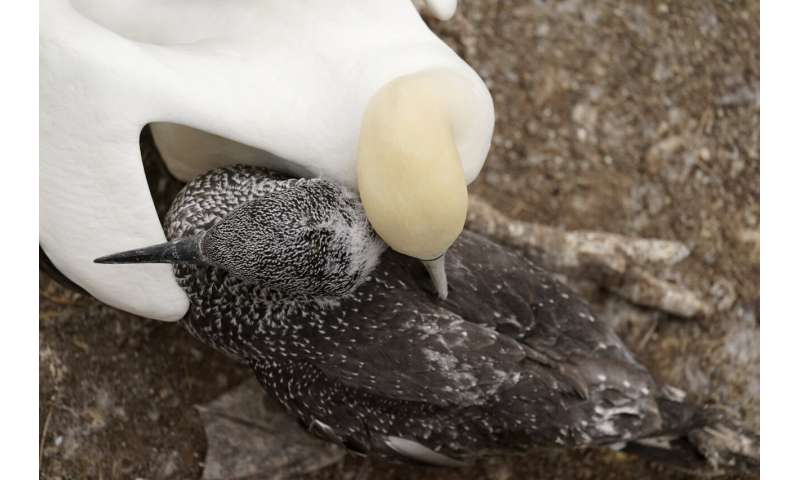
An adult northern gannet preens its young on Bonaventure Island in the Gulf of St. Lawrence off the coast of Quebec, Canada's Gaspe Peninsula, Monday, Sept. 12, 2022. Northern gannets are considered sentinels of the marine ecosystem. Their struggles to feed and breed in a warming climate are being closely watched by scientists. Credit: AP Photo/Carolyn Kaster -
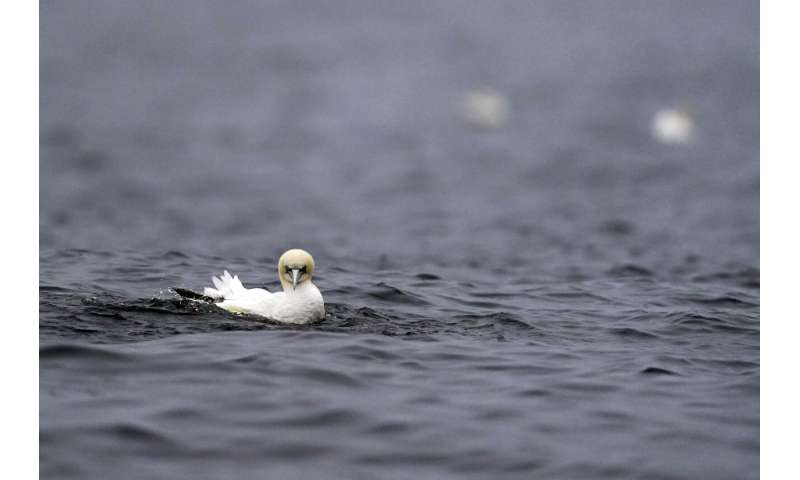
A northern gannets float on the Gulf of St. Lawrence near Bonaventure Island off the coast of Quebec, Canada's Gaspe Peninsula, Tuesday, Sept. 13, 2022. Northern gannets are considered sentinels of the marine ecosystem. Their struggles to feed and breed in a warming climate are being closely watched by scientists. Credit: AP Photo/Carolyn Kaster -
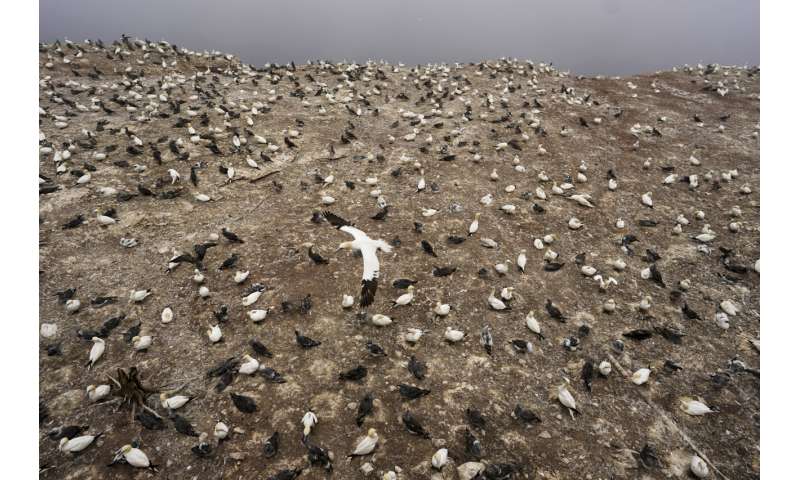
A northern gannet flies above the colony along a cliff on Bonaventure Island in the Gulf of St. Lawrence off the coast of Quebec, Canada's Gaspe Peninsula, Monday, Sept. 12, 2022. Colony life is a crowded affair, as the birds nest barely a wingspan apart and fiercely guard their spots against intrusions by others. Credit: AP Photo/Carolyn Kaster -
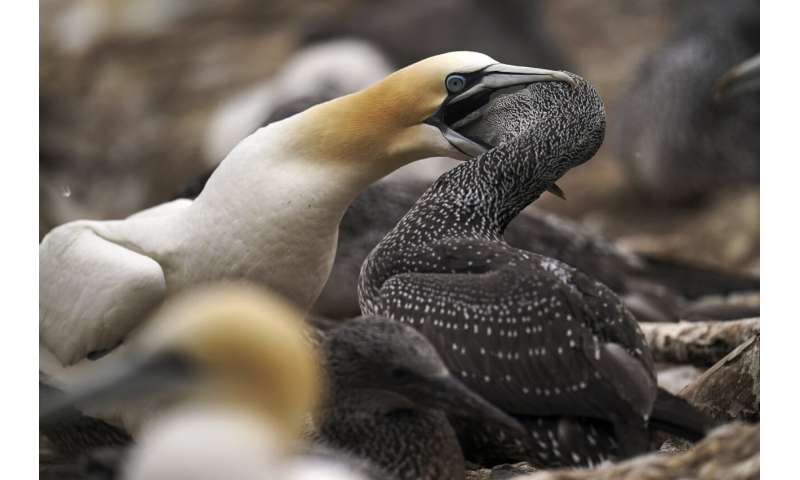
A northern gannet feeds its young bird with regurgitated food on Bonaventure Island in the Gulf of St. Lawrence off the coast of Quebec, Canada's Gaspe Peninsula, Monday, Sept. 12, 2022. Northern gannets are considered sentinels of the marine ecosystem. Their struggles to feed and breed in a warming climate are being closely watched by scientists. Credit: AP Photo/Carolyn Kaster -
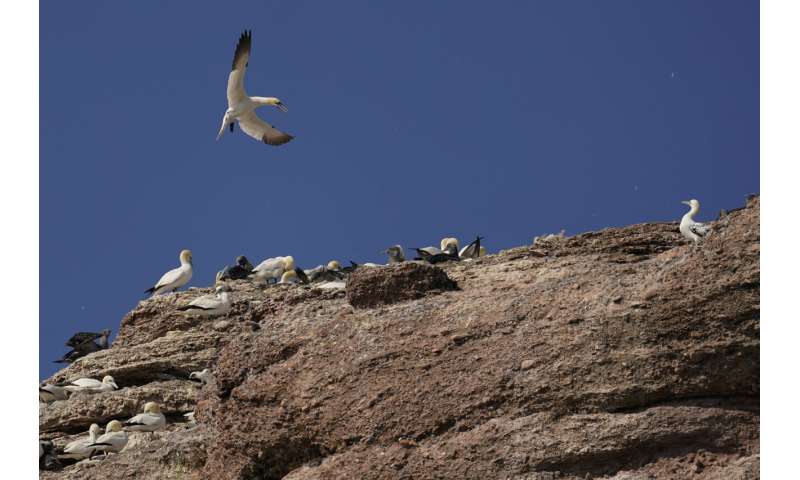
A northern gannet looks to land with other members of the colony atop a cliff on Bonaventure Island in the Gulf of St. Lawrence off the coast of Quebec, Canada's Gaspe Peninsula, Monday, Sept. 12, 2022. Colony life is a crowded affair, as the birds nest barely a wingspan apart and fiercely guard their spots against intrusions by others. Credit: AP Photo/Carolyn Kaster -
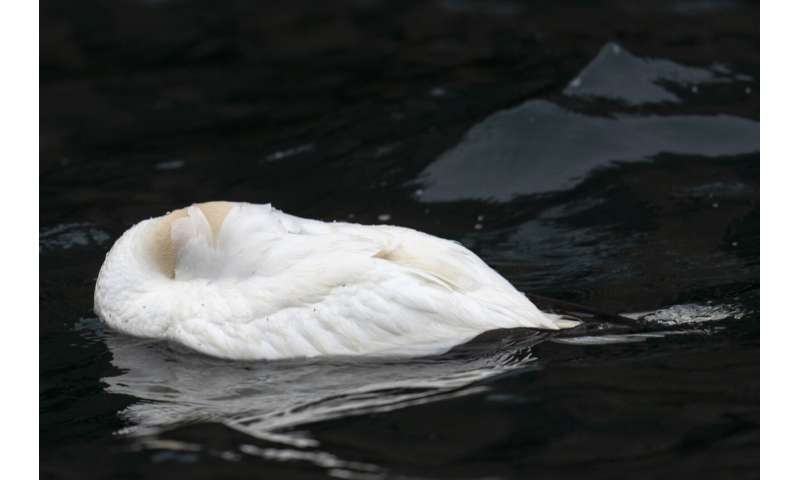
A northern gannet sleeps as it floats on the Gulf of St. Lawrence near Bonaventure Island off the coast of Quebec, Canada's Gaspe Peninsula, Tuesday, Sept. 13, 2022. Northern gannets are considered sentinels of the marine ecosystem. Their struggles to feed and breed in a warming climate are being closely watched by scientists. Credit: AP Photo/Carolyn Kaster -
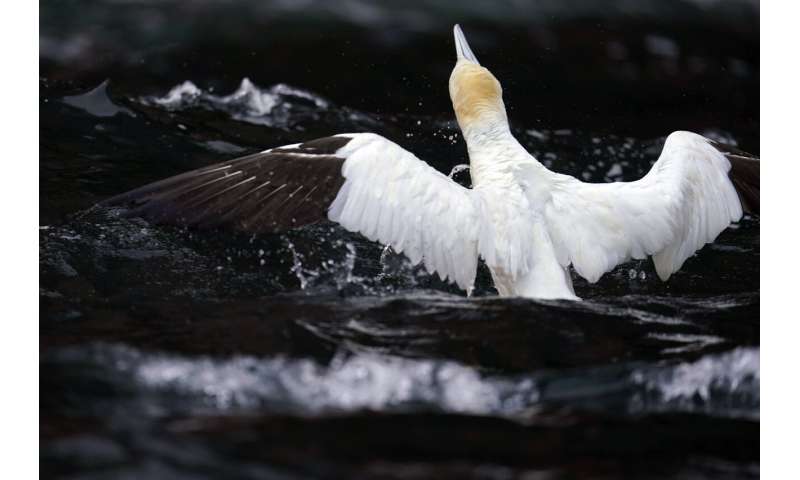
A northern gannet shakes off water as it bathes in the Gulf of St. Lawrence near Bonaventure Island off the coast of Quebec, Canada's Gaspe Peninsula, Tuesday, Sept. 13, 2022. Northern gannets are considered sentinels of the marine ecosystem. Their struggles to feed and breed in a warming climate are being closely watched by scientists. Credit: AP Photo/Carolyn Kaster -
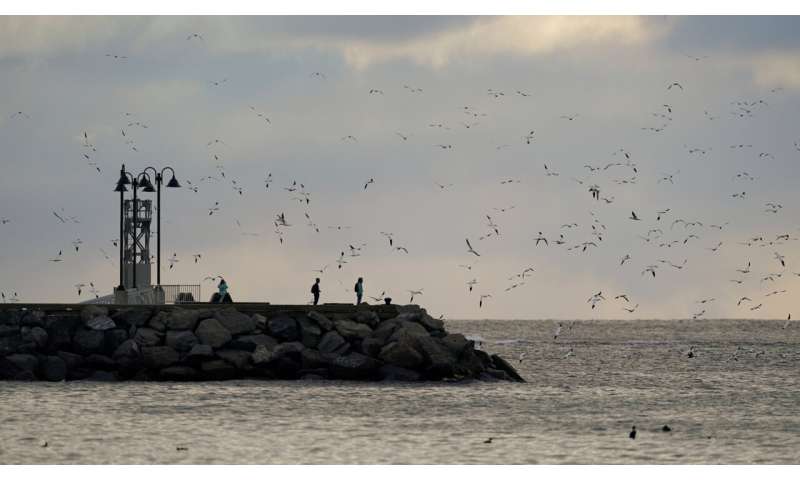
People watch northern gannets fly and dive for fish just after sunrise in Perce, Quebec, Canada, Thursday, Sept. 15, 2022. Northern gannets are considered sentinels of the marine ecosystem. Their struggles to feed and breed in a warming climate are being closely watched by scientists. Credit: AP Photo/Carolyn Kaster
A gannet returning to the nest is welcomed by the mate with a click-clack-click-clack of bills that makes them sound like actors fencing in an old B movie.
If a chick pecks at a parent's beak, it is asking for food, which comes in the form of partially digested fish. Yum.
© 2022 The Associated Press. All rights reserved. This material may not be published, broadcast, rewritten or redistributed without permission.




















